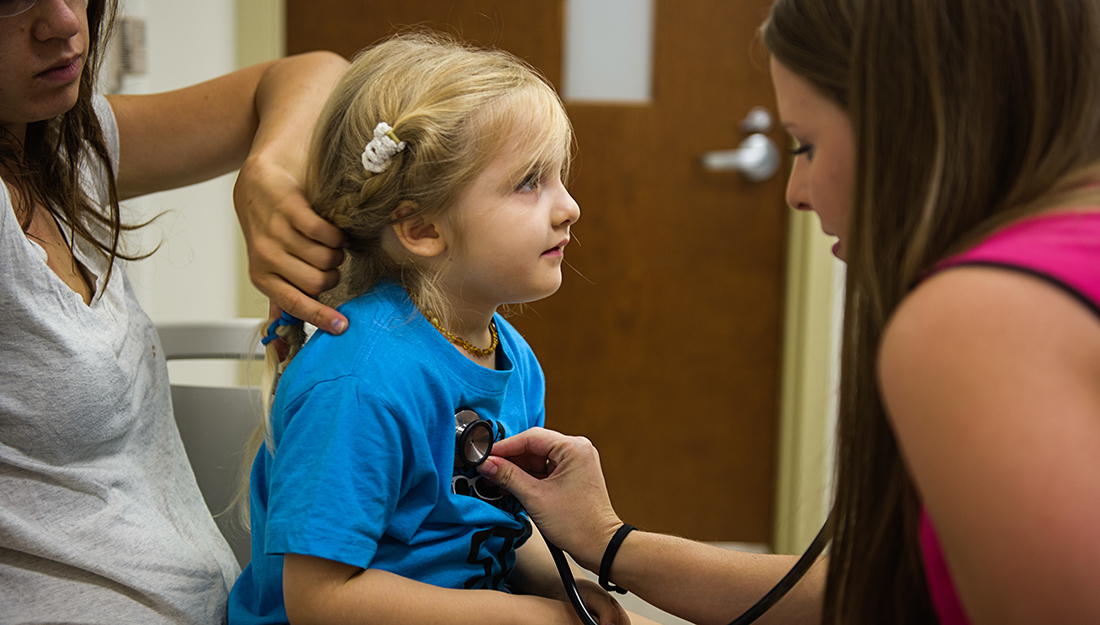- Mary Leigh Meyer
- Medicine, Show on VR homepage, Trending
Texas A&M’s Family Medicine Residency expansion
Texas A&M Family Medicine Residency grows alongside national residency match rates

A family medicine physician is measuring vitals from a young girl.
This year’s Match Day results showed a promising future for family medicine. According to the American Academy of Family Physicians (AAFP), 2019 marks a full decade of year-over-year growth for family medicine in the National Resident Matching Program Main Residency Match (NRMP Match).
Thanks to a grant from the Texas Higher Education Coordinating Board, the Texas A&M Family Medicine Residency program increased in size by one position. Previously, the program, located in Bryan-College Station, Texas, had nine residents in each of the three years of training, for a total of 27 residents. Now, with 10 residents each year, the program will house 30 residents total.
This is great news for the Texas A&M College of Medicine. The college has recommitted to a priority of serving rural Texans, a population most notably served by family medicine physicians.
“Each added residency position to our program contributes to solving the residency shortage and primary care physician shortage across Texas,” said Rae Adams, MD, director of the Texas A&M Family Medicine Residency Program.
AAFP Match calculations include students matching into traditional family medicine residency programs, as well as programs that combine family medicine education with other specialty training; such as emergency medicine, preventive medicine, psychiatry and osteopathic neuro-musculoskeletal medicine.
Adams says the United States is on the verge of a rural health care crisis. In Texas, the biggest problem seems to be distance to health care. Thus, transportation and even access to reliable internet are major issues in health care access for those in rural settings. A report conducted by the A&M Rural and Community Health Institute and the Episcopal Health Foundation noted 35 counties have no physician and 80 counties have five or fewer physicians.
“Over the last five years, 68 percent of our graduates are actively serving patients in rural or medically underserved hospitals and clinics, which is well above national norms,” Adams said.
Studies continuously show 56 percent of matriculating residents practice within 100 miles of their residency programs. “Adding an additional residency position increases the likelihood that a rural community will receive a physician,” Adams said. “Each year, we are getting closer to a solution.”
Media contact: media@tamu.edu


